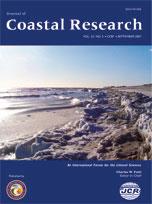Habitat choice and interactions of foraging shorebirds and gulls were studied at a migratory stopover in Delaware Bay, New Jersey. Foraging, vigilance, aggressive behavior, and habitat choice of shorebirds were affected by the presence of gulls. There were significant differences in the time each species devoted to actively feeding; knots spent significantly less time foraging than did the other species. Birds congregated in the habitats where their foraging rates were the highest. When turnstones and laughing gulls fed in larger conspecific flocks, they had higher foraging times. Red knots were most aggressive toward laughing gulls, turnstones were most aggressive toward herring gulls, sanderlings were most aggressive toward turnstones, and semipalmated sandpipers were most aggressive toward knots.
There were significant differences in habitat use: 1) Gulls and turnstones were more abundant along the tide line, 2) turnstones were more abundant on the upper beach, 3) semipalmated sandpipers and turnstones were more abundant on sandbars, 4) only gulls fed on the beach mud, and 5) laughing gulls and semipalmated sandpipers were more common along creeks than were the other species.
Within 5 minutes of a human disturbance, gulls returned to predisturbance levels, while the shorebirds did not. Shorebirds responded most strongly to the presence of dogs than to other disturbances and did not return to beaches following a disturbance by a dog. These observations suggest that there may be some competition for foraging space among foraging species, especially between the shorebirds and the larger gulls, that human disturbance affects shore-birds more strongly than gulls, and that shorebirds and gulls use the habitats differently. The data can be used to manage human disturbance and to protect habitats where the shorebirds have the highest foraging rates, but the least exposure to gulls.





